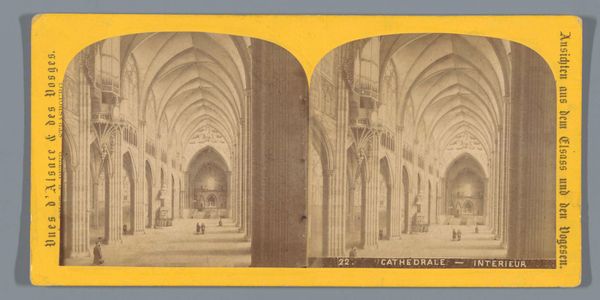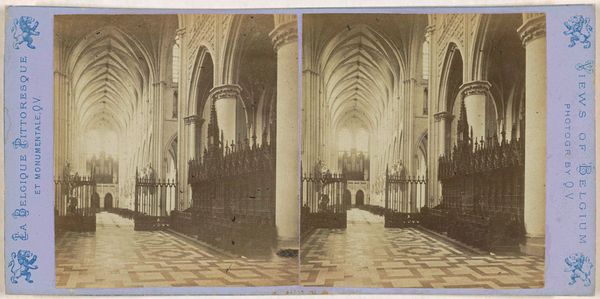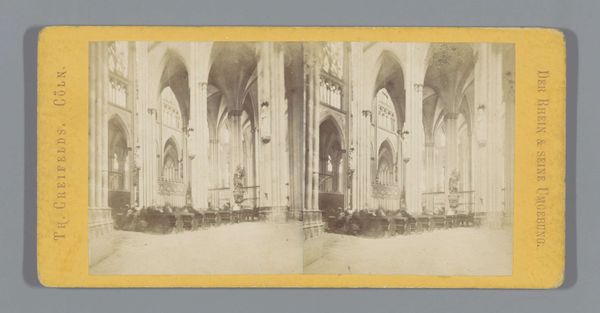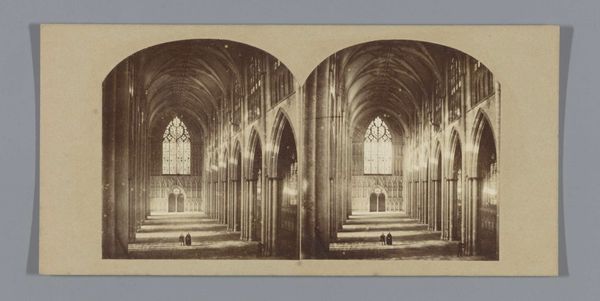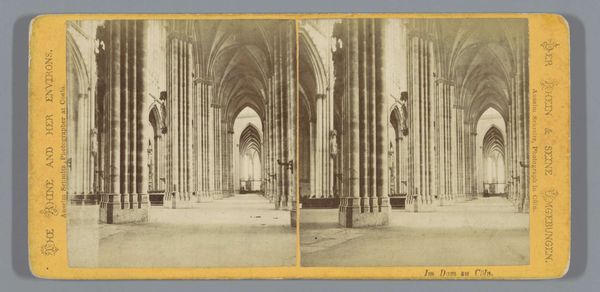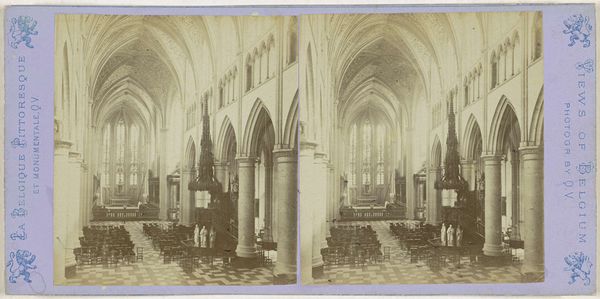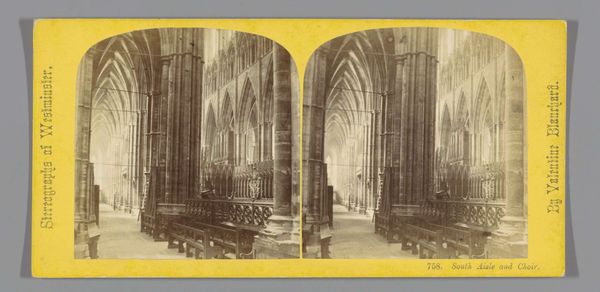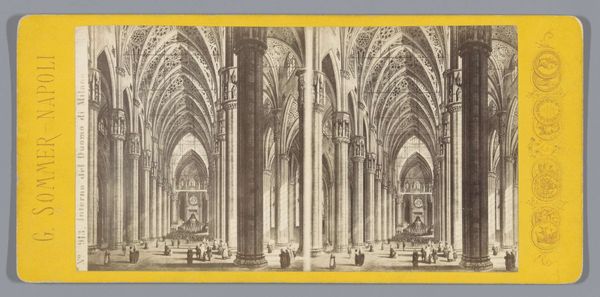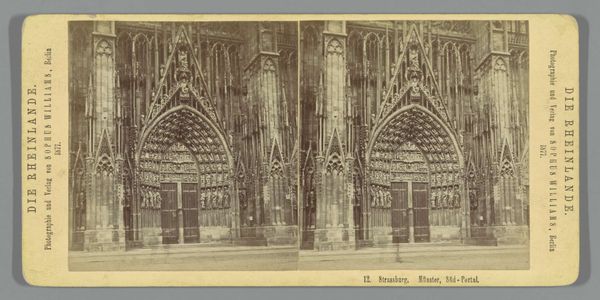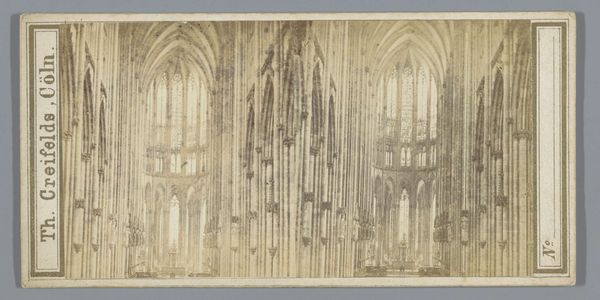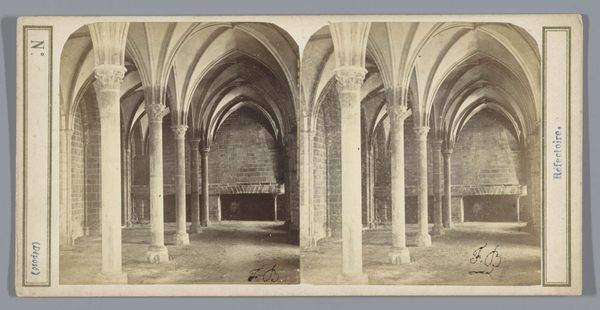
Gezicht op het interieur van het schip van de Notre-Dame in Straatsburg c. 1860 - 1870
0:00
0:00
Dimensions: height 87 mm, width 177 mm
Copyright: Rijks Museum: Open Domain
Curator: Today, we are observing an early gelatin-silver print by Henri Falkenstein, taken circa 1860 to 1870, which provides a "View of the Interior of the Ship of Notre-Dame in Strasbourg." Editor: My first impression is one of oppressive grandeur; the scale is designed to make individuals feel diminutive within an unquestionable order. Curator: Indeed. Falkenstein’s strategic composition—using a stereoscopic presentation with high vantage points—accentuates the cathedral’s soaring verticality. The photograph exploits the contrast between light and shadow to emphasize the structural components: the ribbed vaults, the pointed arches, the colossal columns. Editor: I see this as more than mere formal representation. These gothic cathedrals are symbols of religious and state power and cultural indoctrination, erected to reinforce social hierarchies and control populations through awe. Falkenstein, even indirectly, participates in the perpetuation of that power structure. Curator: But consider the innovative use of photography at this time. Photography allowed a democratization of image distribution previously unattainable. The very materiality of the photograph, a mass-producible object, disrupts any singular reading of authoritative dominance, enabling anyone access to view this powerful symbol. Editor: Perhaps, but that access comes with inherent biases. The photographic lens doesn’t simply reflect reality, it interprets it, reinforcing the dominant cultural perspective. Notice how people appear as blurry figures near the bottom, rendered almost invisible. It reminds me of Foucault’s concepts of power, shaping not just physical spaces but also subjectivities within those spaces. Curator: Nonetheless, Falkenstein displays acute understanding of photographic art. The monochrome palette serves not only to document but to abstract. Note the soft gradations within shadows which are beautifully achieved and invite us to observe light not merely as illumination but also as structural texture. Editor: I appreciate your attention to formal detail. However, it remains essential to consider the photograph’s broader implications: the ways in which it mirrors and reinforces societal power dynamics of the period, subtly manipulating perceptions and upholding systems of control, beyond aesthetics. Curator: Ultimately, analyzing this photograph prompts us to consider the interplay between artistic representation, technological advancement, and sociocultural influences, offering invaluable insights into both our history and ourselves. Editor: Yes, and by questioning the artist's motivations and being critically conscious of the art we are consuming, we can reveal latent prejudices of these canonical works.
Comments
No comments
Be the first to comment and join the conversation on the ultimate creative platform.
